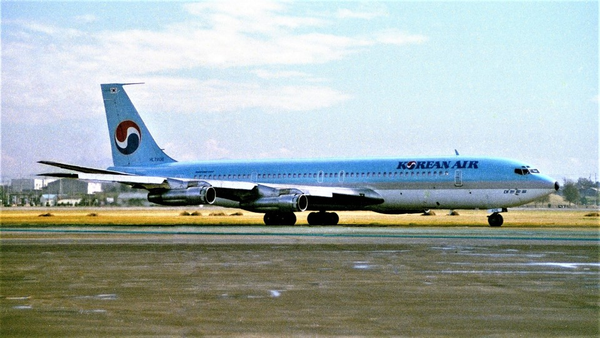In 2014, Airbus introduced the A330-800neo (A330-800) as part of the A330neo family of widebody aircraft. The plane is a smaller version of the A330-900neo (A330-900) that is also part of the next-generation A330neo family. According to Airbus' website, the A330-800 can accommodate up to 260 passengers in three cabin classes and has a maximum distance of 8,150 nautical miles (15,094 kilometers). Airbus incorporated various technologies into the aircraft to enhance passenger comfort and reduce its environmental impact.

Despite Airbus' intentions with the A330-800, the aircraft never became a large component of airline fleets. The plane has received only 12 orders over the past nine years, compared to the hundreds of orders for the A330-900 during the same period. Many carriers prefer the Boeing 787 Dreamliner and other aircraft for multiple reasons. We look deeper into why the A330-800 has failed to take off within the industry.
Why Don't Airlines Want the A330-800?
Airbus announced the A330-800 and A330-900 to replace the A330-200 and A330-300 fleets, which were both highly successful. They had good intentions with these new models since the more fuel-efficient Rolls Royce Trent 7000 engines would reduce emissions by 25% compared to previous-generation planes. However, the A330-800 had problems that the A330-900 simply did not have, leading to a major difference in sales.
Although the A330-800 can fly approximately 1,000 nautical miles (1,852 kilometers) more than the A330-900, it has a smaller passenger capacity. This results in higher operating costs, which airlines are unwilling to pay because it would hurt profits. The A330-900's ability to accommodate more passengers allows airlines to incorporate multiple cabin classes. Many airlines prefer to offer premium economy and business class since they are more profitable than economy class. Furthermore, the A330-900 already provides enough range to meet airlines' needs on specific routes.
The A330-800 also faces significant competition from the Boeing 787 Dreamliner. The Dreamliner's smaller range of 7,503 nautical miles (13,530 kilometers) is more beneficial because it means more cargo capacity. The aircraft is lighter since it must carry less fuel for a reduced range. Reducing the energy used for flights has become essential for airlines, as the aviation industry aims to reduce its contribution to climate change. The Dreamliner is more economical because it can accommodate enough passengers on long-haul routes without excessive weight or fuel usage.
Which Airlines Use the A330-800neo?
As previously mentioned, the A330-800 has received only 12 orders. Compare this to the 312 orders for the A330-900 and over 1,800 orders for all three versions of the Boeing 787 Dreamliner. These order numbers include planes that were already delivered and those scheduled for delivery in the future. Three airlines currently have seven of the 12 ordered A330-800 in their fleets.

Those carriers are Kuwait Airways with four, Uganda Airlines with two, and Air Greenland with one A330-800. Garuda Indonesia has yet to receive its four planes, and an unknown airline is expected to get one A330-800 soon. These airlines have their reasons for purchasing this aircraft, ranging from Greenland's short runways to "better margins" on Kuwait Airways' route between Kuwait International Airport (KWI) and John F. Kennedy International Airport (JFK). The A330-800 will likely continue to be one of the most difficult commercial aircraft for passengers to access due to its low usage by airlines.
What You Don't Know About Airport Operations That Go Overnight » Top 5 Unique Gifts for Pilots & Aviation Lovers Under $50 » Memphis at Midnight: Inside FedEx's Global Superhub »
Comments (0)
Add Your Comment
SHARE
TAGS
STORIES Airbus Aircraft Deliveries A330 A330-800neo A330-900neo Dreamliner Long-HaulRECENTLY PUBLISHED
 KAL858: The North Korean Bombing that Shocked the World
Among the 99 passengers boarding Korean Air Flight 858 on November 29, 1987, few could imagine their journey would end as one of aviation's darkest mysteries.
STORIES
READ MORE »
KAL858: The North Korean Bombing that Shocked the World
Among the 99 passengers boarding Korean Air Flight 858 on November 29, 1987, few could imagine their journey would end as one of aviation's darkest mysteries.
STORIES
READ MORE »
 Ghost Networks: The Rise, Fall, and Revival of Fifth-Freedom Flights
Fifth-freedom flights — routes where an airline flies between two countries outside its home base — have always lived in aviation's twilight zone. We chart their rise, their near-disappearance, and the surprising markets where they still thrive today. Then we take you on board a special Seoul-Tokyo fifth-freedom flight to show how the experience stacks up against a typical regional carrier.
TRIP REPORTS
READ MORE »
Ghost Networks: The Rise, Fall, and Revival of Fifth-Freedom Flights
Fifth-freedom flights — routes where an airline flies between two countries outside its home base — have always lived in aviation's twilight zone. We chart their rise, their near-disappearance, and the surprising markets where they still thrive today. Then we take you on board a special Seoul-Tokyo fifth-freedom flight to show how the experience stacks up against a typical regional carrier.
TRIP REPORTS
READ MORE »
 US Air Force to Launch New Experimental One-Way Attack Drone Unit
In a move that signals a tectonic shift in American airpower, the U.S. Air Force is preparing to stand up its first-ever experimental unit dedicated solely to "One-Way Attack" (OWA) drones.
NEWS
READ MORE »
US Air Force to Launch New Experimental One-Way Attack Drone Unit
In a move that signals a tectonic shift in American airpower, the U.S. Air Force is preparing to stand up its first-ever experimental unit dedicated solely to "One-Way Attack" (OWA) drones.
NEWS
READ MORE »



